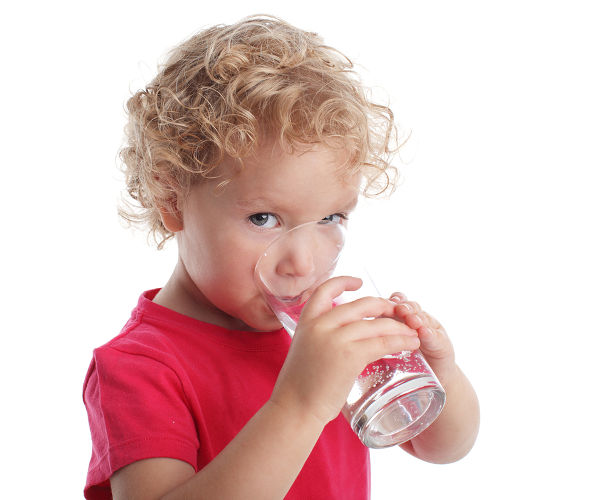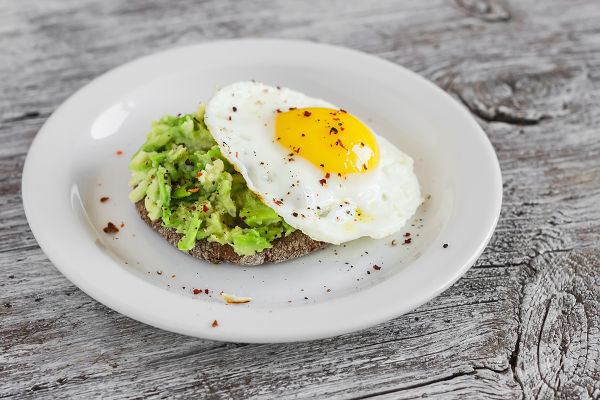Made a new year’s resolution to lose weight? Have an event and an outfit you want to wear but it no longer fits? Still carrying the baby weight even though the “baby” is now six years old? January is the month when many of us resolve to lose a few pounds. However, for busy parents it’s not that simple. There’s no time for the gym, and even if there was then being kept up half the night with a teething toddler makes it difficult to find the energy. And when you have had a rough day with tantrums, nappy leaks, and battles over homework, then reaching for the chocolate, wine, or cake, is irresistible.
It doesn’t help that there seems to be a million different plans, programmes, clubs, and gurus all claiming that their way is the best way. Meanwhile, the media is full of stories about what we should and shouldn’t eat that are often conflicted. Trying to navigate through it all whilst dealing with the daily tasks that come with being a parent can be overwhelming, and as a result, it’s far easier to put our own health at the bottom of the “to-do” list.
However, our own health is important. Maintaining a healthy weight will ensure you have more energy to run around after your children. Having more energy will make you feel happier, and a happy mum is vital to a happy child. If following a set plan or going to a gym isn’t practical, then try to make some small changes that are easier to implement instead. Over time, small changes can lead to big results.
Do Your Maths

Lots of diet plans claim to have a magic formula that works, but the cold, harsh truth is that weight loss can only be achieved by ensuring that you take less calories in than you burn off. Furthermore, many people mistakenly assume as adults we need around 2,000 calories a day. However, this figure is an average, and was calculated when our lives were less sedentary. The reality is a bit more complex.
BMR & TDEE
There are two figures that you should be aware of when thinking about losing weight. The first is BMR, or Basal Metabolic Rate. Your BMR is the amount of calories that your body uses just by living. It is the amount of calories you need for your heart to pump, your lungs to inhale, etc. It varies from person to person, and is dependant on factors, such as age, weight, height and sex. So, if your BMR is 1,400 calories, that is how much you will burn off even if you spend the entire day slouched on the sofa watching an entire series of Gilmore Girls on Netflix.
The second figure is your TDEE, or Total Daily Energy Expenditure. This is the amount of calories you will burn off doing your typical daily activity. If you have sedentary lifestyle, such as an office job and no exercise, then your TDEE won’t be that much higher than your BMR. However, if you are very active then your TDEE will be a few hundred calories more than your BMR.
You can calculate both of these figures using an online calculator. However, it’s worth noting that these figures will not be entirely accurate as everyone is different, so they should be taken as a general guideline rather than an absolute rule.
Why Do These Numbers Matter?
As noted above, weight loss is achieved when we burn off more calories than we take in through food. Therefore, regularly eating less in calories than your TDEE will result in weight loss. Ideally, you should aim for a figure somewhere in between your BMR and your TDEE. Eating below your BMR can be OK for many people, but there is a danger that you may miss out on vital nutrients by restricting your calorie intake this much, or put too much strain on some of your organs.
For example, Catherine is 30 years old. She weighs 10 stone and is 5ft 4inches. She has an office job and does no exercise. Her BMR, the amount of calories her body needs to function, is 1,340. Her TDEE, the amount of calories she burns during the day in her normal routine, is estimated to be 1,600. She restricts her calorie intake to 1,500 calories a day and consequently starts to lose weight.
Once you know your BMR and TDEE, you have a rough idea to how much you should be eating on a daily basis.
Reducing Your Calorie Intake

Although you now have a target amount of calories for each day, try not to get too worried if you over eat on some days. Instead, think of it as a guide rather than an absolute limit. This puts less pressure on you, and makes the process easier overall. There are lots of small steps that you can make to help you reduce the amount of calories you consume, and we have listed a few here. You could try a new one each week.
Start with a Food Diary

One of the best ways to start losing weight is to start tracking everything you eat. You can write it down in a diary, or use an app such as MyFitnessPal. Be honest with yourself, and include every mouthful, even that spoonful from your child’s plate, or the chocolate biscuit you had with your morning tea. Doing this for a week or two will help you to understand where you might be overeating. In addition, if you are using a calorie counting app then you will know exactly how many calories you are consuming on a daily basis (and just how much you need to cut out).
Drink More Water

If you find yourself regularly craving a snack, then there is a good chance that rather than being hungry, you are actually dehydrated. Drinking more water can help stave off those cravings. Furthermore, drinking water before a meal will make you feel fuller, and as a result, you will eat less of your meal. Some clinical studies have also suggested that drinking very cold water can burn off calories as your body works to maintain its core temperature when the cold fluids are introduced. Aim to drink around 8 glasses of water a day, or two litres worth. Your skin will also thank you.
If you struggle to remember to drink in between doing the school run, changing nappies, or finding that one piece of lost Lego, that is absolutely vital to the final model, then try filling up a water bottle in the morning and keeping it near you throughout the day. You are more likely to take sips of it if it remains in sight.
Cut Out the Sugary Drinks

Although you can avoid dehydration by drinking liquids other than water, it is best to avoid sugary drinks, including fruit juices. Most of them are high in calories. A 250ml fruit smoothie, a can of cola, and a glass of diluted cordial will all have around 140 calories in them. Have one of each of those in a day and you will have consumed 420 calories in drinks alone. That’s the equivalent of eating an extra sandwich.
It might be tempting to simply switch to the “diet” versions of your favourite drinks. However, there is some evidence that artificial sweeteners, such as those found in diet cola, or sugar free cordial, actually increase our appetites, making us eat more. Instead, try to stick to water. If that sounds too difficult to start with, consider starting by switching one or two of your daily drinks to water to begin with.
Slow Down When Eating

As parents, many of us often find ourselves having to chomp down our meals as fast as possible, usually once the food has cooled down to room temperature because we have been too busy sorting out everyone else’s food first. When our stomachs are full, it takes around 15 minutes for the “I’m Full” messages to reach our brains. Therefore, if you eat quickly, it can be very easy to eat too much before your brain realises you are full. If eating slowly simply isn’t practical, try stopping yourself when you think you might be around two thirds full. The chances are, after 15 minutes you will feel completely full, and if not, you can always eat a bit more later.
Use Smaller Plates

It might seem too good to be true, but using smaller plates has been proven to help people lose weight. Many people who are overweight struggle with portion control and using smaller plates can help overcome this. This is particularly helpful in the UK where most of us have been raised to believe that finishing everything on your plate is polite. Remember, you can always add more later if you are still hungry.
Eat a Good Breakfast

If your typical breakfast involves a bowl of sugary cereal then the chances are that you often feel hungry mid-morning. Switching to a more filling breakfast will reduce your need for a mid-morning snack, as well as give you the energy your need for the day. Overnight oats are great for busy Mums because they can be prepared the night before. Try this recipe to start – it’s a great one for those who love coffee and all things sweet:
- 40g of porridge oats.
- 100g of fat free yogurt.
- One small banana, mashed.
- 50ml of cooled coffee (about ¼ of a mug).
- A teaspoon of maple syrup
- A teaspoon of cocoa powder.
- 10g of chia seeds (optional for a fibre boost).
Mix all of the ingredients together in sealable glass jar, or a Tupperware tub. Seal tightly and place in the fridge. It will be ready to eat in the morning with no other preparation required. It’s also filling enough to keep you going for most of the morning.
Prepare Healthy Snacks in Advance

If snacking is your downfall, then consider preparing some healthy snacks the night before. You could chop up some carrot and celery sticks and serve up with a spoonful of low fat hummus. Keep an apple in your bag for when you are out and about. If you have healthy alternatives that are readily available that you have gone to the effort to prepare then you are more likely to choose them over a chocolate biscuit.
Switch to Dark Chocolate

Need that chocolate fix? Try switching to a dark chocolate with at least 70% cocoa solids. Many people find that just one square of dark chocolate will satisfy that chocolate craving, making it less likely they will over indulge.
Ditch Your Pyjamas, Leggings, & Joggers

Yes, we know they are comfortable, and they make it easy to get dressed in the morning. However, if you wear fitted trousers, dresses, and skirts, then you will notice more when you are adding on pounds, giving you more motivation to cut down those calories.
Cut Out the Booze

After a long day at work, followed by a stressful bedtime routine with overtired children, it is too easy to reach for the wine. However, if you drink a couple of glasses, then you will be consuming the equivalent of a large chocolate bar. Do that every night without burning off those calories or reducing your intake elsewhere and you could easily put on a pound over a week or two. The NHS has some great tips on reducing your alcohol intake.
Move More

You probably move a lot if you have young children to chase after, but if you want to burn off more calories then moving more will help. You don’t have to join a gym, or go for a three-mile run. Taking your child for a walk to the park will help, as will running the hoover around the house. Make it a goal to spend at least 10-minutes every hour moving around, even if it is just doing a silly dance with your pre-schooler.
Have a Cheat Day Once a Week

Let’s be honest. Weight loss isn’t fun, so don’t be afraid to have a cheat day once a week. Banish the guilt and enjoy a slice of cake. It will help make the process easier and give you a chance to reward yourself for being good during the rest of the week.




